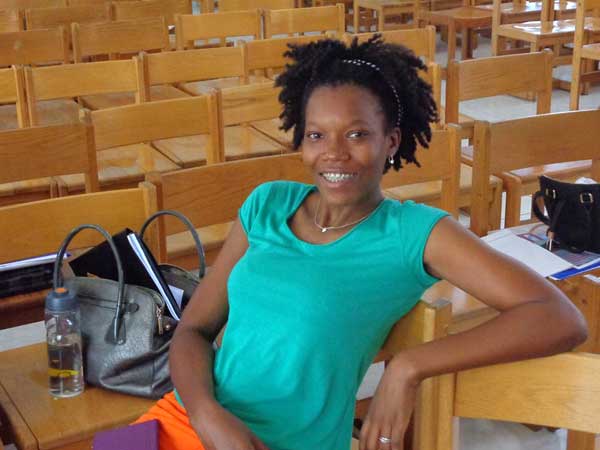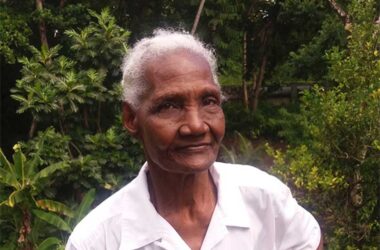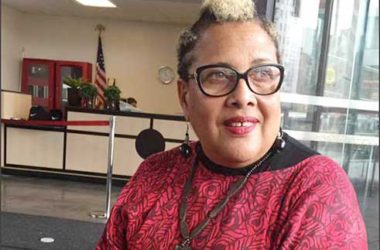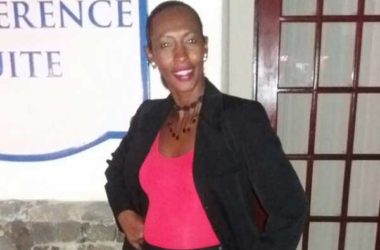
Our woman of the week, Monesha Broome tried her best to fight her life’s calling as a Salvation Army Officer/Minister of the Gospel but she soon learnt that you can’t cheat your fate especially when it’s a calling from God.
Lieut. Broome said her calling came shortly after high school. The thought of becoming a Salvation Army officer stuck in her mind and although she tried to talk herself out of the idea, it just wouldn’t go away until she just gave in.
She said: “I was thinking about becoming a nutritionist and I was on that path with my studies and out of nowhere I was sitting home one day thinking of the way forward and then something told me to become a sally army officer and I thought, ‘No, you don’t get money to be a sally army officer. My parents sent me to school, spent all that money and I’m going to throw all that away and become a sally army officer?’ I continued on in sixth form looking at nutrition as my career path. I fought it and I fought it until I just ended up at the college for officer training and right now, I’m on my second appointment.
The 25 year old said first of all, she’s a child of God but secondly, she’s a server to those who need her help.
Lieut. Broome said she loves helping people hence the reason why she holds her current position. She said, “I love to serve others. I’m a lady of service and I help those who need my help and my motto is, I’m a friend to those who have no friends”
One could well imagine the pressures of overseeing such an organisation expectedly, Lieut. Broome said her life is just work and home and there is hardly a moment to relax especially since she is not a native of St. Lucia (she is Jamaican), and all her friends and family are far away.
A social life she said is non existent as she is dedicated to the work of the SA whether it be the church, the school or the social aspect. In fact, Lieut. Broome said the only down time she gets is when she goes home she gets to sleep, however, she is looking forward to Christmas day when she has no work to do.
The 25 year old said shortly after her first appointment, she was sent to St. Lucia which came as a shock because she was new to the field as a lieutenant and was now charged with the responsibility of overseeing the running of the SA’s movement over an entire island.
It has been rough but she continues to press on and with the help of her husband, nothing is too much.
Something interesting that not too many people know, she is addicted to Pinterest: “I love discovering new crafts like things to sew etc. and it has to be easy. If it’s too technical then I lose interest but if I’m interested then I pin it and hope that one day I will get to sew or create that thing. Right now, I’m very much into creating baby cloth diapers. I ordered all the material and I made one and it was so cute that I’m actually considering starting a cloth diaper business.”















/
O.K. you self-hating Negroes,
Just look at this most beautiful woman with her God given glorious crown of beautiful NATURAL HAIR – no fake weave, no poisoned chemicalized-hair to kill their soft and well-bodied NATURAL HAIR to get the lifeless no-bodied Caucasian hair, that brain-damaged Samboes like Black Pete Josie and the other Samboes who lust after the Pale ‘ma-lad’ Miss Daisy, thinking that the “white-girl flow” will make them Honorary Whites.
Can you tell me with a strait face, that such an attractive Queen is considered by Black Samboe Josie as, “TOO BLACK AND UGLIER” (Black Pete Josie’s words)???
Miss Broome, I see you are engaged in the blessed works of Charity, for Charity is the removal of a mango skin that may harm a pedestrian, and even a smile if it is done to please the One God without associating partners like Ghost, Muhammad, and the Son of Mary with God, you will be rewarded. Keep on smiling, you are a powerful Queen. So don’t allow Satan to do this to you: Here you will see WHAT ROCHELLE DECIDED for the love of her daughter:
https://www.facebook.com/emmanuel.beryllia/videos/10204774092486169/
/
/
About the ass:
https://www.facebook.com/kendria.k.harris/videos/10153915381836180/
/
/
NOTHING OF THIS BEAUTY UGLY:
https://www.youtube.com/watch?v=1acSmRHN4R4
/
/
GOT TO LOVE YOURSELF
https://www.youtube.com/watch?v=WkyrP4gwpR0
/
/
Sarah Baartman, at rest at last
By Lucille Davie
Sarah Baartman, displayed as a freak because of her unusual physical features, was finally laid to rest 187 years after she left Cape Town for London. Her remains were buried on Women’s Day, 9 August 2002, in the area of her birth, the Gamtoos River Valley in the Eastern Cape.
Baartman was born in 1789. She was working as a slave in Cape Town when she was “discovered” by British ship’s doctor William Dunlop, who persuaded her to travel with him to England. We’ll never know what she had in mind when she stepped on board – of her own free will – a ship for London.
But it’s clear what Dunlop had in mind – to display her as a “freak”, a “scientific curiosity”, and make money from these shows, some of which he promised to give to her.
Baartman had unusually large buttocks and genitals, and in the early 1800s Europeans were arrogantly obsessed with their own superiority, and with proving that others, particularly blacks, were inferior and oversexed.
Baartman’s physical characteristics, not unusual for Khoisan women, although her features were larger than normal, were “evidence” of this prejudice, and she was treated like a freak exhibit in London.
The ‘Hottentot Venus’
She was called the “Hottentot Venus”, ‘Hottentot’ being a name given to people with cattle. They had acquired these cattle by migrating northwards to Angola and returned to South Africa with them, about 2 000 years before the first European settlement at the Cape in 1652. Prior to this, they were indistinguishable from the Bushmen or San, the first inhabitants of South Africa, who had been in the region for around 100 000 years as hunter-gatherers.
Khoisan is used to denote their relationship to the San people. The label “Hottentot” took on derogatory connotations, and is no longer used.
Venus is the Roman goddess of love, a cruel reference to Baartman being an object of admiration and adoration instead of the object of leering and abuse that she became.
Baartman objectified: an early nineteenth century French print titled, ‘La Belle Hottentot’
She spent four years in London, then moved to Paris, where she continued her degrading round of shows and exhibitions. In Paris she attracted the attention of French scientists, in particular Georges Cuvier.
No one knows if Dunlop was true to his word and paid Baartman for her “services”, but if he did pay her, it wasn’t sufficient to buy herself out of the life she was living.
Once the Parisians got tired of the Baartman show, she was forced to turn to prostitution. She didn’t last the ravages of a foreign culture and climate, or the further abuse of her body. She died in 1815, at the age of 25.
The cause of death was given as “inflammatory and eruptive sickness”, possibly syphilis. Others suggest she was an alcoholic. Whatever the cause, she lived and died thousands of kilometres from home and family, in a hostile city, with no means of getting herself home again.
Cuvier made a plaster cast of her body, then removed her skeleton and, after removing her brain and genitals, pickled them and displayed them in bottles at the Musee de l’Homme in Paris.
Some 160 years later they were still on display, but were finally removed from public view in 1974. In 1994, then president Nelson Mandela requested that her remains be brought home.
Other representations were made, but it took the French government eight years to pass a bill – apparently worded so as to prevent other countries from claiming the return of their stolen treasures – to allow their small piece of “scientific curiosity” to be returned to South Africa.
In January 2002, Sarah Baartman’s remains were returned and buried on 9 August 2002, on South Africa’s Women’s Day, at Hankey in the Eastern Cape Province.
Her grave has since been declared a national heritage site.
Marang Setshwaelo, writing for Africana.com at the time, said Dr Willa Boezak, a Khoisan rights activist, believed that a poem written by Khoisan descendant Diana Ferrus in 1998 played a major role in helping bring Baartman home. Boezak said: “It took the power of a woman, through a simple, loving poem, to move hard politicians into action.”
Whatever the reason, Sarah Baartman is home, and has finally had her dignity restored by being buried where she belongs – far away from where her race and gender were so cruelly exploited.
Updated: 14 May 2012
Read more: http://www.southafrica.info/about/history/saartjie.htm#.Vo0IYhUrKUk#ixzz3wT1wr2dk
/
RED FLAG
https://www.facebook.com/100004952508877/videos/540350499473362/
/
/